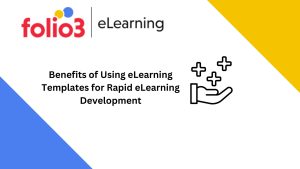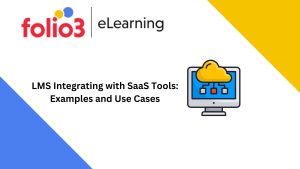
Introduction
The way we acquire and process information is changing due to our hectic schedules and busy lives. Many firms and training facilities are now choosing custom micro-Learning development, a powerful approach to delivering staff training, rather than spending hours upon hours educating or learning about conceptual frameworks that cannot be immediately implemented.

Executive Summary
Whether or not you’ve heard of microlearning, it’s undeniable that its popularity is growing. Custom micro-Learning development is one of the best methods for learning and training, and it works well for educating big and small teams. So, what if you’re an instructional designer or L&D representative venturing into the world of micro-learning for the first time? Then continue reading! You can use this article as a resource for microlearning content.
What Is Microlearning?
With the use of the very effective learner-centered teaching methodology known as microlearning, traditional eLearning as we know it today is transformed and integrated into the mobile learning movement. Microlearning is, in essence, adaptable, succinct, and supported by pedagogical theory and cognitive neuroscience. A single objective or skill focuses on a brief, focused, and dynamic learning opportunities that are part of a larger learning sequence or subsystem. It is a far cry from the drab “Death by PowerPoint” presentations of the past. Microbursts of rich knowledge in various formats keep students interested and accommodate various learning preferences. A custom micro-Learning development can be utilized as a standalone course or as a supplement to in-person encounters in blended learning settings.
What Is The Hype Of Microlearning Research?
Let’s be real here. Can we train people more quickly? This is a question that the training industry has been asking for years. The days when most corporate training took place in five-day off-site conferences are long gone. Five days were replaced by three. Then the one-day seminar began to gain popularity. The learning goals were the same throughout.
eLearning came along, and efficiency became the goal. We continue to advise our clients that switching from instructor-led classes to e-learning typically entails halving the duration.
Microlearning is experiencing a similar growth in popularity to e-learning due to its effectiveness in training and development. In fact, 40% of the study’s almost 600 participating firms, according to the ATD Research report “Microlearning: Delivering Bite-Sized Knowledge,” presently use microlearning. 92% of those 228 businesses anticipate expanding their employment of it in the upcoming 12 months. Furthermore, 41% of the 60% of various participants that do not now use microlearning anticipate doing so.
Different Types Of Custom Micro-Learning Development
Let’s say you just saw a picture of New England’s Lobster Mac & Cheese on Instagram that was incredibly mouthwatering. You’ve now made the decision that you need to study the meal’s recipe.
YouTube is probably the first to come to mind when you need knowledge. You then proceed to watch cooking videos made by experts and other culinary professionals.
You’ve taken part in microlearning without even giving it a second thought. The videos you view, which are all typically around 10 minutes long, provide you with the data you need in manageable chunks. You quickly gain more knowledge and education from using the app.
- eBooks and PDFs
Using PDFs and electronic books to transmit information is a widely popular microlearning method. Some people believe that learning through literature is the best method. These people can effectively access information by using PDFs and eBooks.
The most popular and widely used formats for microlearning are PDFs and eBooks. PDFs are available for almost any topic or idea.
The issue of boredom and the absence of images or interactions that standard PDFs typically present has a more contemporary solution in interactive PDFs. They include features from rich media in a PDF, such as subtitles, links, buttons, GIFs, videos, and music.
- Mobile Apps
A very effective and strong method of microlearning is through mobile apps. Today’s society uses smartphones often, and microlearning platforms have benefited from this. They develop apps that may provide quick doses of knowledge and instruction.
Mobile microlearning apps come in several forms. Some of these tools include Performance Support Tools (PSTs), which provide just-in-time training for employees and other learners. According to the author and consultant Marc Rosenberg, they increase productivity.
- Infographics
In the form of graphical representations, infographics provide information, facts, or expertise. They employ a variety of formats and combinations of illustrations, graphs, and text to quickly and effectively present a subject.
They are fantastic at condensing information that might otherwise be difficult. This facilitates analysis and comprehension.
Users can quickly process information or data that before would have required considerably more time. Additionally, they are visually appealing.
- Gamification
Games may be quite absorbing and enjoyable. They are, therefore, useful as microlearning tools. When employed as microlearning tools, they should concentrate on the topic or regulation.
Multi-level microlearning games are common. They demand that students demonstrate their readiness to advance to a harder level. For completing a stage, prizes such as badges and points are possible.
Games are a great tool for emphasis and memory retention. The levels and repetitions ensure that the information the game teaches truly sticks. They are fantastic for fostering social contact between students who get to converse with one another through the game.
- Shorter Videos
Videos are a particularly popular microlearning method since they may be a very engaging medium for knowledge transfer. Videos under two minutes are ideal for explaining procedures. They do a great job of assisting users in remembering the facts or information they acquire.
For a variety of microlearning applications, short movies are appropriate. They have proven to be a very efficient way to teach learners how to do things. They can be interesting and offer a great alternative to students who dislike text-based learning.
You can employ a variety of brief microlearning films. Whiteboard animations use hand-drawn or digitally created graphics, text, and illustrations. They frequently come with narration.
Videos using text-based or kinetic typography communicate themes or concepts in an interesting way by presenting moving or dynamic text using shapes, colors, visuals, numerous font styles, and narration. These are becoming more and more well-liked.
Interactive videos are a popular type of microlearning video. They were developed to reduce instructor and student boredom and one-sided interactions.
While instructing, interactive videos also give students opportunities to engage and interact. Because of this, they retain information much better.
- Simulations
Simulations work well as process demonstration tools. They enable the student to immerse themselves in a simulation of the real event and integrate themselves into the context around the study’s central theme.
With simulation, students may quickly and realistically grasp ideas. They can practice what they learn and act out real-world scenarios without worrying about possible negative outcomes. Effectively, assignments are practiced for students before they really do them.
There are various methods to use simulation. For instance, trainee pilots use flight simulators to simulate actual flight scenarios. Students can complete all the necessary learning without worrying about their errors’ effects on the passengers.
Why Is It Important To Deconstruct The Learning Material?
To avoid information overload, it is crucial to divide knowledge into clear “chunks,” in addition to doing so to give a learning experience structure and coherence. You might be startled to learn how delicate a piece of technology the human memory is.
In actuality, we can only keep track of a maximum of five new bits of information before our working memory becomes overburdened and further information is lost in the abyss of what psychologists call the Ebbinhauser Forgetting Curve.
By breaking down the learning material, it is simplest to try to prevent an overload of information in the first place. Furthermore, learning metrics can identify particular pain points or knowledge gaps thanks to the discrete bite-sized “chunks” of content.
Conclusive Thoughts
There is practically no restriction on what types of organizations can gain from deploying microlearning programs due to the inherent flexibility of this method. Early buyers of custom micro-Learning development have been especially common in industries that are “deskless” and may combine on-the-job training with off-site employment.
The utilization of hands-on digital simulations in microlearning has been shown to increase clinical competencies, and it is spreading throughout the healthcare industry. More recently, during the COVID-19 pandemic, frontline healthcare workers have received access to mental health and resiliency training via microlearning, such as Dignity Health’s Strength to Endure course.

FAQS
A training strategy or concept called microlearning disseminates information or knowledge in manageable doses. It teaches students bite-sized chunks while concentrating on a key topic or idea.
Microlearning can support learning in a huge variety of ways. Videos, interactive materials, infographics, mobile apps, podcasts, ebooks and PDFs, flipbooks, games, and simulations are examples of how it might be presented.
No, microlearning may not always be the best option. Yes, it may be incredibly practical, time-saving, and simple to use. It occasionally lags behind more conventional kinds of education, though.









